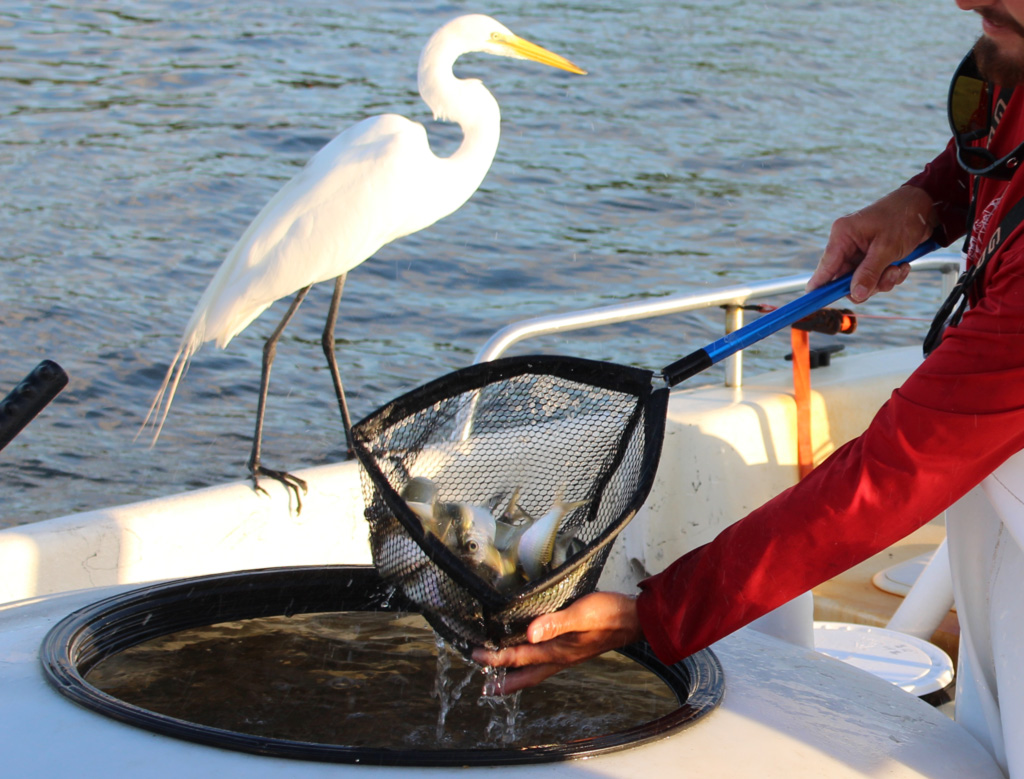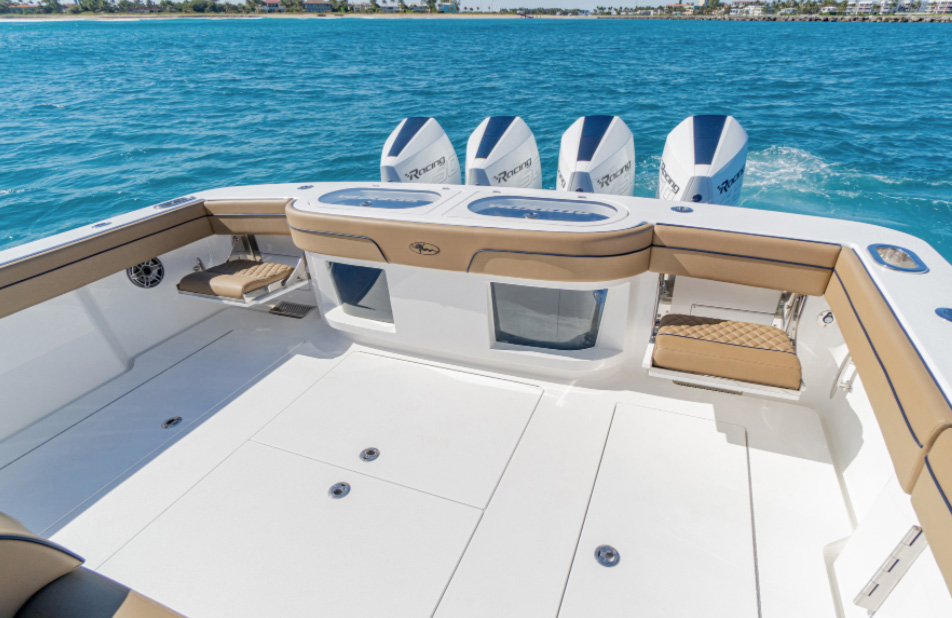What to Look for in Livewells
By Lenny Rudow
When you’re looking at a boat and trying to figure out if it will meet your angling expectations, a close inspection of the livewell or livewells is certainly in order. Many anglers enjoy fishing with live bait, but some livewells barely function better than a bucket of water. How will you know if the one you’re looking at is top-notch, or barely worthy of debate?
Livewell Design
Physical design is one of the most critical elements of a good livewell, starting with an oval shape. In rectangular or squared-off livewells the baits will get stuck in the corners and smack themselves silly (literally) by swimming into the fiberglass. Rounded is good, too, and at least having rounded corners is an absolute must. Look out for livewells that are narrow, deep, and cylindrical in shape. This gains you capacity, but in many cases the waterflow can cause low-oxygen “dead spots” at certain heights. On top of that, if the baits cluster at or near the bottom of the well you’ll likely get wet up to the elbow trying to scoop them out.
The color of the livewell’s interior counts, too. Those baby-blue interiors aren’t colored to look pretty, but rather are intended to keep the baits calm. Experience and research show that white gel coat interiors can leave certain baitfish disoriented and frantic. In this situation, again, they tend to smash into the sides of the well and beat themselves up.
Livewell Capacity
Capacity is obviously also quite important, especially if you fish with a big crew and need to haul lots of baits or particularly large-sized baits. Truth be told, in most cases the limiting factor of livewell size is the boat’s size. However, some boats dedicate more of the available space to this feature than others do.
For the average angler, a 20- or 30-gallon (75.71- or 113.56-liter) livewell will probably do the trick. Smaller ones should be viewed with some skepticism, and setting aside guides and charter operations, few people will ever need more than 50 gallons (189.27 liters) of livewell capacity. However, also note that how many baits you can put into “X” gallons of livewell space is not only dependent on the sheer size of the well, but is also related to the type of baits you use. Bunker are a good example, because this species is very sensitive to over-crowding. If you put more than one bait per gallon into the livewell, you’re likely to see die-offs. Judge how much livewell capacity you really need accordingly. The size of the baits you use also figures into this equation, because a 20-gallon (75.71-liter) livewell is just fine for four-inch fish, but it’s not nearly large enough for more than a handful big Goggle Eyes or mullet large enough for tarpon baits.
Also remember that most anglers would prefer having multiple livewells as opposed to a single one with the same capacity. Splitting the bait-hauling ability between two or three wells gives you the ability to keep different bait species separated. And having livewells both fore and aft make it easier for everyone aboard to grab a fresh livie without having to move very far.
Livewell Flow
Flow volume is indeed very important. Long story short, the more flow there is (IE the stronger the pumps are) the better. Weak livewell pumps can result in weak or dead baits, while a healthy flow results in healthy baits. Just how that water flows is important, too. A single inlet can swirl the water in one level of the well, while another goes more or less stagnant. Multiple-level inlets solve this problem, and full-column inlets which circulate water through the well from top to bottom are generally considered best.
How the water drains from the well should be considered, too. Overflow drains built into the side of the livewell are great, especially as compared to stand-pipes, which can be problematic for two reasons. First, stand pipes get in the way when you’re trying to net baits. Second, it’s easy to put in the stand pipe, think it’s secure and mated properly with the drain, and later discover that the pipe fell out or got knocked loose — so all the water drained out, and your live baits are now dead. Stand-pipes are among the simplest and easiest livewell drains to plumb and build so you see them all the time and it’s actually hard to avoid them. So give bonus points to livewells that eliminate them.
Finally as related to waterflow, remember that all pumps can and do fail. So when it comes to serious anglers who demand reliability, having a back-up pump is a must. Sea chest and manifold systems that allow you to direct the flow where you need it are the best bet, and having a secondary pump will cover the bases 99-percent of the time. On the flip side of this coin look out for pump-share arrangements that utilize a Y-valve and a single pump to serve both the livewell and the raw water washdown, because you can bet that pump will fail sooner than a dedicated one would. Also note that the extra plumbing involved in such arrangements can lead to sub-par flow volume.
For trollers and lure-lovers the livewell may be relatively unimportant compared to the boat’s other features. But some other fishermen will consider the livewell critically gear. And in that case, remember: all livewells are most assuredly not created equally.


